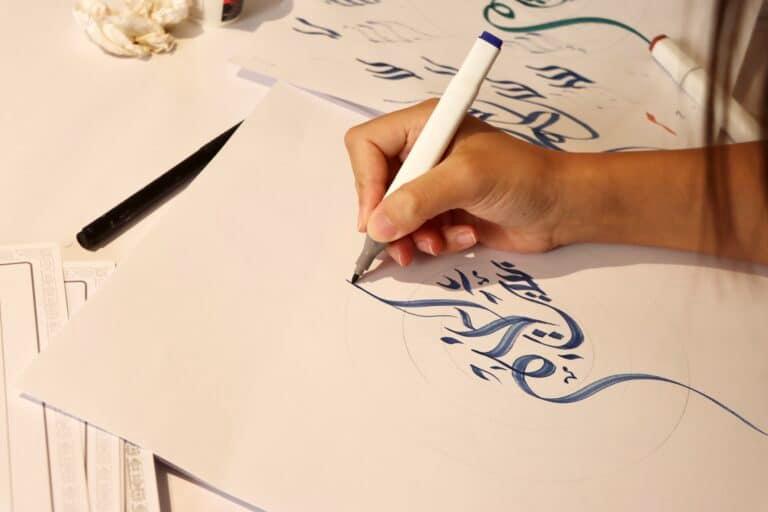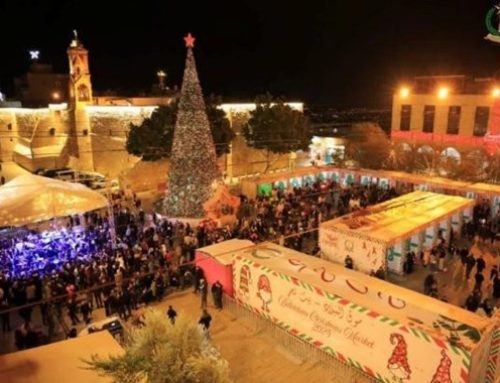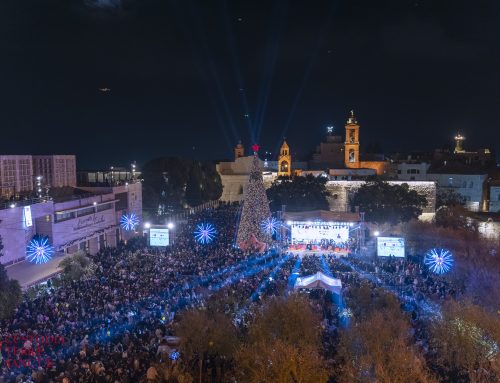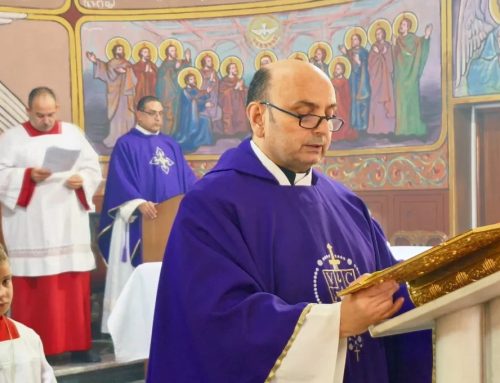Since late September, our center in Bethlehem, Dar al-Majus, has hosted an Arabic calligraphy workshop led by Gaza-based calligrapher Hany Sarsour. Over the course of six lessons, participants learned the basics of various Arabic scripts, including the Diwani script. This style derives its name from the Arabic word diwan, which denotes both a poetic anthology and a private assembly called by the sultan during the Ottoman Empire—a writing form whose origins combine poetry, power, and secrecy, bestowing it with an aura of prestige and mystery.
“There is a particular beauty in the shapes of Arabic letters and their splendor,” says Hany Sarsour, eager to share his love for calligraphic art and the resonance it offers for Arab and Palestinian culture and its struggles. Arabic calligraphy “is not just a way of writing”: it is “splendor,” dialogue, a “bridge through which the world can connect with two ancient histories,” the Arab and Palestinian ones, learning “human values capable of transcending space and time.” A bridge to peace, then, which, over the past month, has reached the inhabitants of Bethlehem.
Who were the students who attended the workshop? What do you think motivated them to participate?
The workshop students were a diverse group in terms of age and background, including young people and adults, men and women. I was very struck by this great diversity, and they were all equally engaged. I imagine that the enthusiasm was driven, on one hand, by a desire to explore new artistic forms and, on the other, by curiosity about an art that is a fundamental part of our cultural heritage.
Arabic calligraphy is profoundly connected to Islamic and Arab cultural identity, and for many, learning this art is a way to strengthen their connection to it. There is also particular beauty in the forms of Arabic letters and their splendor, which draws many to learn calligraphy. From my perspective, I think the course participants gained personal benefits: they learned the basics and became familiar with different tools and styles, such as Kufic, Diwani, and graffiti. We should also remember the spiritual benefit of Arabic calligraphy: writing in this style requires hope and concentration and helps to develop and cultivate calm and meditation.
What kinds of tools do you use to practice and teach calligraphy? And which texts do you choose as a foundation?
We, of course, used various types of brushes, tailored to the specific needs of each exercise. Students had the opportunity to try traditional brushes, crafted from natural materials and cut at specific angles to suit the various calligraphy styles we needed. The best brushes for calligraphy are soft and thin, as they allow for an even application of color.
For writing, we used special calligraphy boards designed to facilitate letter control, relax the hands, and ensure precision, thus allowing for strong lines and defined angles. For the texts, we used classic and poetic writings to create a connection between participants and the characteristics of the Arabic language and script.
You taught the course remotely to students in Bethlehem. Did you find a strong artistic interest in the city? Was anyone already familiar with calligraphy?
Some students already had a passion for writing or basic knowledge of the art, but for many, this was their first encounter with Arabic calligraphy. It was rewarding to see their enthusiasm and their desire to explore and understand the intricacies of such a complex discipline. For them, this experience represented a new way of learning Arabic, exploring it not only as a native language but also as an artistic path.
Speaking of Bethlehem, I hope one day to admire in person the beauty, vibrancy, and cultural and architectural heritage of this area, where tradition and modernity intertwine. I also noticed a strong desire, especially among younger people, to use art to express cultural identity and address social issues—a sign of the city’s vibrant interest in art’s communicative possibilities. This experience made me fall in love with the city, and I hope to visit it soon.
And regarding your connection to your homeland, Gaza? How did you cultivate your artistic interests, and what role has Gaza played and continues to play in your artistic formation?
I was born and raised in Gaza, a place that has profoundly shaped my identity both as an artist and as an individual. I come from a modest yet close-knit family. My parents have always been a great support in my artistic career, despite all the difficulties we have faced.
My father, Issa, worked in Israel for over twenty years, while my mother took care of the family and the home. Both have always encouraged me to pursue my dreams and never give up, a lesson that still guides me, even though in Gaza there is nothing left—no dreams, no future—only the salt of tears and bitterness.
Living in Palestine, surrounded by its beauty and history, has strengthened my bond with calligraphy as a means to express Arab heritage. Over time, I have come to understand that Arabic calligraphy is not just a way of writing: it is an art capable of translating complex feelings and ideas, becoming a form of visual communication where beauty and meaning merge. In this art form, I found a way to express myself and explore the beauty and culture of my people.
What do you think is the significance of the art of calligraphy today in Palestine, and what does this art say to our time?
Calligraphy is not just an artistic form: it is a form of cultural resistance, a means to express the beauty and strength of our Palestinian and Arab identity.
I believe that the strength of traditional Arab arts and the reason why it is worth encouraging their spread is that they bring Palestine and the Arab world to global attention, going beyond the boundaries of writing and graphic symbols. With Arabic letters, the emotions and experiences of Arab people, including joy and hope, can be conveyed. In an era marked by speed and change, calligraphy represents a moment of calm and meditative beauty, offering a sense of hope and a value given to details, to the small things. It is much more than what the letters themselves represent: it is a language that reaches the universal human being.
By:proterrasancta






